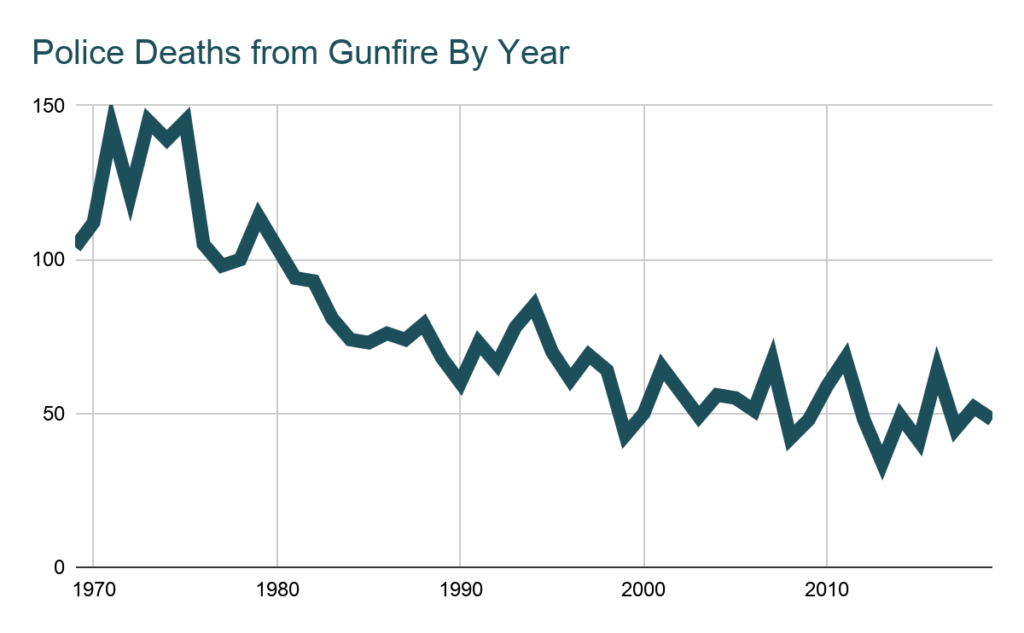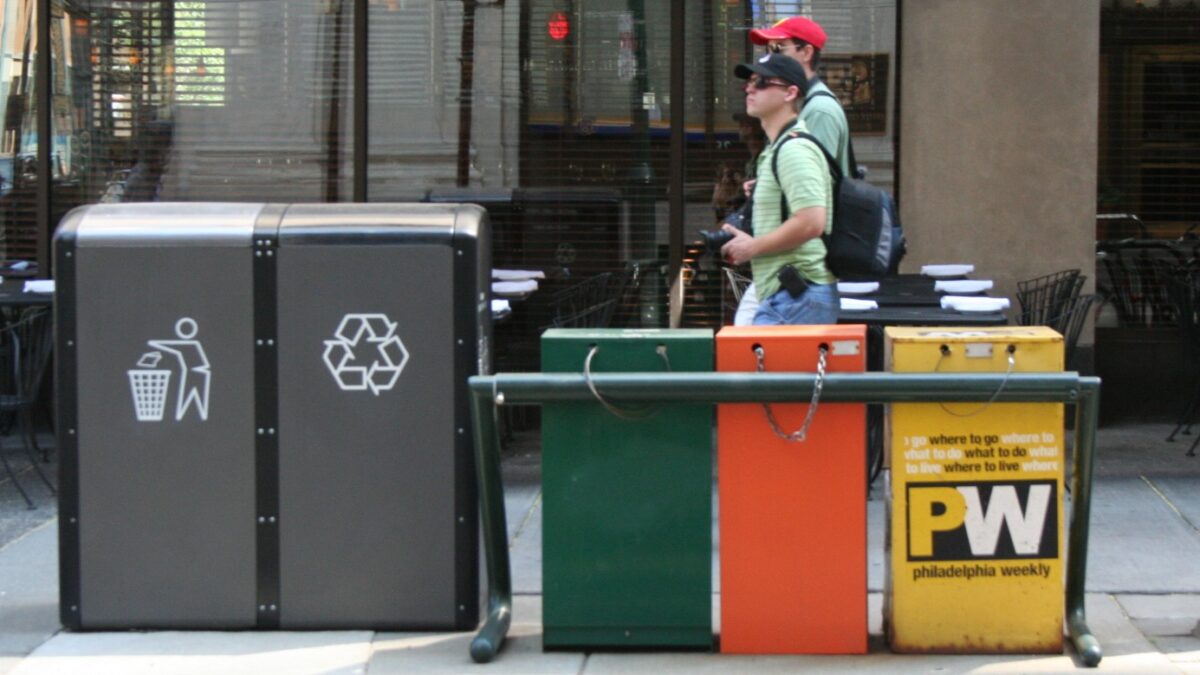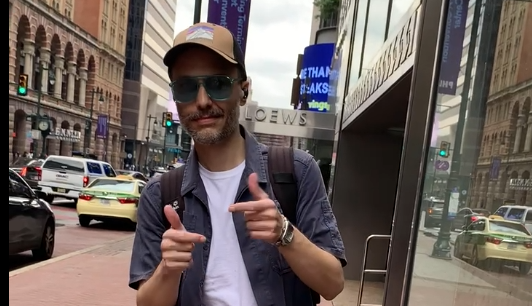 Photo by Daniel ODonnell on Unsplash
Photo by Daniel ODonnell on Unsplash
Dan Pearson: It’s time for conservatives to wake up to reality on race and policing
While much of the recent coverage on CNN and MSNBC is focused on Covid-19, If you tune into Fox News, you will learn of a “war on police.” According to Fox, across America police officers are under fire — with ambushes, riots, and other threats to life and limb of the men and women in blue on the rise. According to the Officer Down Memorial Page, there have been 132 deaths in the line of duty for police officers thus far this year, compared to 147 for all of 2019, certainly a significant increase.
However, these numbers come back to earth when one key fact is accounted for; with 55 officer deaths attributed to Covid-19, this year’s spike in deaths in the line of duty has more to do with a global pandemic than with any kind of organized anti-police campaign.
Of course, that’s not to minimize the killings that have occurred. But with the National Law Enforcement Officers Memorial Fund estimating the number of police in America at 800,000, and only 30 officers killed by gunfire, does it make sense to expend such effort on a campaign meant to make police officers fear for their lives during their day-to-day routines? To hear some pundits speak, policing in America has never been more dangerous. In fact, the evidence shows a much different story. Using the same data set (from the Officer Down Memorial Page), I constructed this chart in order to show police deaths from gunfire by year.

Over the last fifty years, the number of officers shot on the job has more than halved. In fact, in 2013 — the year after the Trayvon Martin killing by civilian George Zimmerman, the event that served as the first call to action for the Black Lives Matter movement — America actually set a record with only 34 police killed on the job by gunfire. While it is certainly true that many BLM supporters hold strongly anti-police views — the proliferation of “ACAB” (all cops are bastards) spraypaint tags is just one of many examples — it is also true that these radicals are skilled at being provocative and attracting attention. The farthest fringe of these protests do not represent the views of the vast majority of people asking for reform, most of whom respect law enforcement — but simply want to restore civilian control over our police departments.
Some might ask: what exactly is wrong with our policing? For many, they might go their whole lives without a “police encounter” beyond a nod on the street — or they have been saved by a friendly officer at their precise moment of need. Perhaps they have friends or family who are officers, and feel defensive or threatened by criticism — or are sensitive to the excesses of the ACAB crowd. In one viral video, a police officer made an emotional video where she expressed fear of ambush when a McDonalds forgot to include her Egg McMuffin, and its staff was surly in providing it. While it is certainly reasonable to sympathize with people who do in fact have a tough job, criticism is not a threat. Criticism is an important part of any career, and constructive criticism — the emphasis on the word constructive — should be welcomed.
For others in our country, it’s clear and obvious why police are being scrutinized, because their experience of policing has been very different. Perhaps they have been strip-searched by an officer who claimed to smell marijuana during a traffic stop, or beaten by an officer who felt they didn’t answer a question respectfully. While police often justify these incidents based on their own experiences on the job, it is simply inconsistent with our rights as American citizens to be treated in this fashion by government agents of any kind, especially when no crime has been proven. The Constitution protects all Americans against unreasonable searches and seizures, affirms our right to due process, restricts unnecessary detainment, and assures us of the right to peaceably assemble and petition for redress. A police officer who uses a knightstick to punish disrespect may feel he is instilling respect — but what actually happens is that he sows seeds of distrust, and contempt. The fruits of which have now come to harvest in our country.
The amount of police killings has increased over the last twenty years, despite crime rates remaining relatively stable and threats to officers remaining low. According to Stone, police are about 15% more likely to use potentially lethal force on Black Americans.
There is nuance in this debate, as always; many supporters of the police acknowledge these passing incidents, saying that they are regrettable but do not reflect the norm. Neither, they say, is this police overreaction disproportionately directed at Black Americans.
On the question of police use of force, however, the conservative researcher Lyman Stone found the conclusion quite clear: while in a typical year 40-65 police officers might be killed by gunfire, police officers kill roughly 1,700 people per year. Since 2013, this accounts for roughly 10% of all violent deaths of Americans per year, even after accounting for Americans killed in Afghanistan by the Taliban. The amount of police killings has increased over the last twenty years, despite crime rates remaining relatively stable and threats to officers remaining low. According to Stone, police are about 15% more likely to use potentially lethal force on Black Americans.
Some conservatives might argue that police violence against black men is still rare. They will take my 30 deaths from gunfire over 800,000 officers, a rate of .0000375%, and say: sure, it’s not common for a police officer to be shot, but there are 40 million black Americans and only 500 officer-related shootings of black men, a rate of .0000125% — so really police officers have three times as much to fear. Of course, this assumes that police violence is distributed equally. Since 95% of police shootings are of men, it makes sense to look at the threat to black men specifically. Once you isolate black men, who are outnumbered by black women, the rate rises to .0000235%. When you control for only black men between 18-34, roughly 4.5 million people who are the likeliest victims of police shootings, the rate goes up to .00009%, which is more than twice the likelihood of being shot on duty while working as a police officer.
So what is to be done?
First, we need to restore civilian control over the police. Under our current union-designed system of arbitration, appointed police commissioners, like Danielle Outlaw in Philadelphia, are unable to discipline their workforce in an effective manner. This means that when officers are accused of misconduct and removed from the force, they are typically rehired with back pay. No armed state agency should be able to operate as a self-governing body, with current and former members deciding on disciplinary matters in a forum that clears the offender in 90% of cases. We give our officers a badge, a gun, and a salary higher than the city’s median household income (even before overtime). In general, most of us also give them respect for doing a dangerous job. However when it comes to discipline and on the job conduct, we the people need to set the standards, not the Fraternal Order of Police.
This means, for example, that when police chiefs fire an officer, they stay fired.
Second, we need to end the culture of fear. Anyone who kills or assaults a police officer should be brought to justice — but we should not teach police officers to fear every situation. The facts simply do not support a civilian population that is out to hurt police officers. Police deaths from gunfire remain thankfully low, especially compared to historic rates from the ‘60s and ‘70s. While officers should and will remain wary on the job, it is not reasonable to approach traffic stops like life-or-death situations. That’s the exact kind of attitude that leads to deaths like Philando Castille’s.
Third, we need to end the concept of “qualified immunity.” Qualified immunity is a legal doctrine designed to protect government officials who make honest mistakes in the course of doing their jobs, but it has slowly become a way for officers to escape responsibility for misconduct. Like many other “rights” created by the Supreme Court, it does not exist within the
The qualified immunity doctrine limits the constitutional right of redress unless the infringement of rights has been “clearly established.” Over the course of decades, what has been considered clearly established has continually shrunk. According to the CATO Institute, qualified immunity has been used to protect officers who stole hundreds of thousands of dollars because it wasn’t “clearly established that theft of property violates the 4th amendment.” In another case, courts used qualified immunity to argue that police did not “knowingly” violate someone’s rights by deploying a dog to bite them while sitting on the ground with their hands up. Do we really have such low standards for police behavior?
Instead of letting the unrest we are witnessing linger and metastasize into a crisis that is actually dangerous for our police officers, our communities and our country’s foundations, it is time for action to change how policing works. The vast majority of black Americans aren’t looking to knock down the Jefferson Memorial or blow up Mt. Rushmore; the demand is for action on policing in our communities. If this is achieved, all that will be left behind the spray paint canisters and looted shops will be a few isolated radicals, lacking the cover of a wider movement to operate within.
Dan Pearson is a South Philadelphia based urban policy enthusiast, political activist, and dad. @DanPearson266




Could it be that police killings have increased because these victims do not acquiesce as readily as their peers from the past?
A bad cop is an equal opportunity bad cop. Opportunity is more of a factor than race.
In the cases of bad policing, there are larger numbers of police victims from other races.
The worst part of your so called reality Is that good officers are now second guessing Their decisions and it is affecting the whole of society.
You mention Qualified immunity, and Confiscation. You do not mention that both were originated by Federal authority. You do not mention that resisting arrest is against the various states laws. This is important to inform the actions of the police. All citizens are expected to obey the law, and if the problem is the law, that should be made clear, and not laid at the feet of those we pay to enforce it.